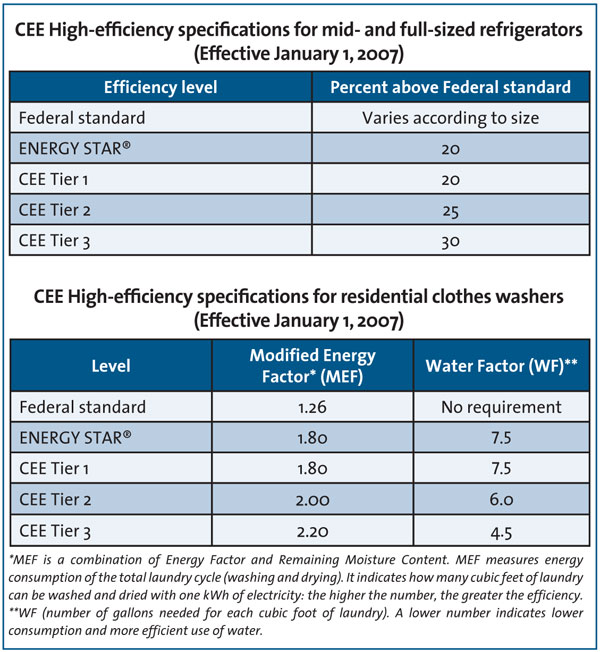Appliances for the Home: Sustainable Choices that Meet Accessibility and Lifestyle Needs
NEW APPS FOR APPLIANCESÂ
Appliance innovations include increased capacities and more efficient cycle times, as well as sensors that detect dirt and leaks. But the most visible feature found across the broad spectrum of appliances is fully integrated touch screen technology that echoes that of cell phones and gives users the satisfaction of using their mastery over digital technology in the domestic sphere. A step beyond LCD (liquid crystal display) and LED (light-emitting diode) displays, touch screen panels on new models of wall ovens, ranges, dishwashers, washers and dryers, light up at the touch of a finger displaying icons with word descriptors. Like a cell phone the panel is black at rest. After an icon has been pressed and an application for "perfect turkey" or "extra light soil" has launched in the oven or washer, the panel fades to black except for the selected mode, which remains lit.Â
GUIDELINES AND CERTIFICATIONS
ENERGY STAR®
ENERGY STAR is an international voluntary program for energy-efficient consumer products (www.epa.gov). First created by the United States government in 1992 to reduce greenhouse gases, it has since been adopted by other countries, plus the European Union. ENERGY STAR Product Development teams at the EPA and the DOE aim to transform the market for manufactured goods by expanding the availability and visibility of more than 60 energy-efficient product types. One enticement for manufacturers to seek ENERGY STAR ratings is the fact that a number of states and utilities have consumer reimbursement programs for ENERGY STAR-rated products.
Devices carrying the ENERGY STAR logo, such as dishwashers, washers and refrigerators, generally use 20 to 30 percent less energy than is required by minimum federal standards.
Minimum federal standards for appliances are established by the DOE. Performance factors include efficiency levels, incremental equipment prices, operating cost savings, payback periods and lifecycle cost savings. Manufacturers of most home appliances in the U.S. are required to attach a yellow and black sticker to the product stating its annual energy consumption and operating cost estimates.
ENERGY STAR specifications differ with each item. As of early 2008, average refrigerators need 20 percent energy savings over the federal standards. There are no ENERGY STAR specs for cooking appliances since energy-efficient models need far less energy than other heavy energy consumers such as refrigerators and clothes washers. Also, their payback time is relatively long. Nor are there specs for dryers since dryers using the same power sources have virtually indistinguishable drying systems. When applicable, manufacturers' product specifications include ENERGY STAR compliance.
In recent years, the ENERGY STAR program has been involved in some controversies. Criticisms have included outdated testing rules and manufacturers being allowed to test their own products and selectively spot-check test results. To improve the program, the EPA and DOE formed a new partnership on energy efficiency in buildings and products where the EPA has taken over the branding and imaging of ENERGY STAR. In a September 2009 briefing for the Senate Committee on Energy and Natural Resources, the EPA announced an enhanced ENERGY STAR program that includes more frequent updates (a minimum of once every three years for home appliances), enhanced product testing and the intent to look into a new program to identify "top tier" efficiency products and technologies. Already, the Consortium for Energy Efficiency (CEE), a nonprofit public benefits corporation (www.cee1.org), publishes information on appliances that qualify for CEE Tier 1, 2 or 3 (see CEE High-Efficient Home Appliances Initiative tables at right).
Another significant announcement is the requirement that products at some future date are tested in an accredited laboratory and qualifying product information be submitted to the government before the product can be qualified ENERGY STAR. At present, manufacturers have their own testing labs usually located on the factory premises. "Manufacturers will need to keep open and ongoing two-way communication with the EPA /DOE to assure all test procedures are followed," says Tom Anderson, Director of Sustainability, Electrolux Home Products, Inc. "This will allow consumers true peace of mind when they purchase their appliances with the trusted ENERGY STAR label."

Americans with Disabilities Act (ADA)
ADA Accessibility Guidelines (ADAAG) requirements for appliances published by the U.S. Access Board (www.access-board.gov) cover kitchen and laundry room layouts and appliances. Because private homes are exempt from ADA compliance, household appliances are not required to meet standards relating to, for example, location of oven controls ("804.6.5.3 Controls. Ovens shall have controls on front panels"). Design professionals, however, should be aware of accessibility issues and review product specifications to see if models are or are not ADA compliant.Â
Star-K® CertificationÂ
Appliances that comply with a Sabbath Mode feature are certified by Star-K. To be sure that all halachic (Jewish religious law) concerns have been addressed, design professionals should check model numbers from specific manufacturers on the Star-K website.
NSF® Certification
NSF International, an independent non-profit certification body, developed NSF/ANSI (American National Standards Institute) Standard 184 in order to determine if residential dishwashers could clean and sanitize dishes as effectively as their commercial counterparts. This national standard establishes minimum design and performance requirements. Products certified to this standard are verified to achieve a 99.9 percent reduction of bacteria when operated on the sanitizing cycle. Again, manufacturers' product specs will so state if a dishwasher is NSF-certified. NSF also certifies dryers and washing machines.
LEED® Certification
Specifying ENERGY STAR water-efficient appliances will earn three U.S. Green Building Council (USGBC) Leadership in Energy and Environmental Design (LEED®) credits with no prerequisites:
9.1 High-Efficiency Appliances (maximum 2 points). Install appliances from the list below. To receive points for one type (e.g., refrigerator), every appliance of that type must meet the applicable requirement below.
- ENERGY STAR-labeled refrigerator (s) (1 point).
- ENERGY STAR-labeled dishwasher(s) that use 6.0 gallons orless per cycle (0.5 point).
- ENERGY STAR-labeled clothes washer(s) (0.5 point).
9.2 Water-Efficient Clothes Washer (1 point). Install clothes washer with modified energy factor (MEF) > 2.0 and water factor (WF) < 5.5. A clothes washer that meets these requirements and the requirement in EA 9.1 can be counted for both.
Applicants should check for synergy and trade-off options for points.









